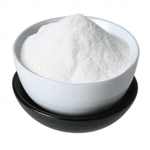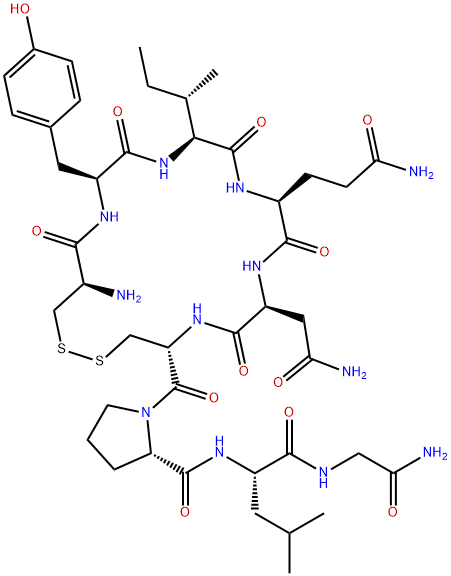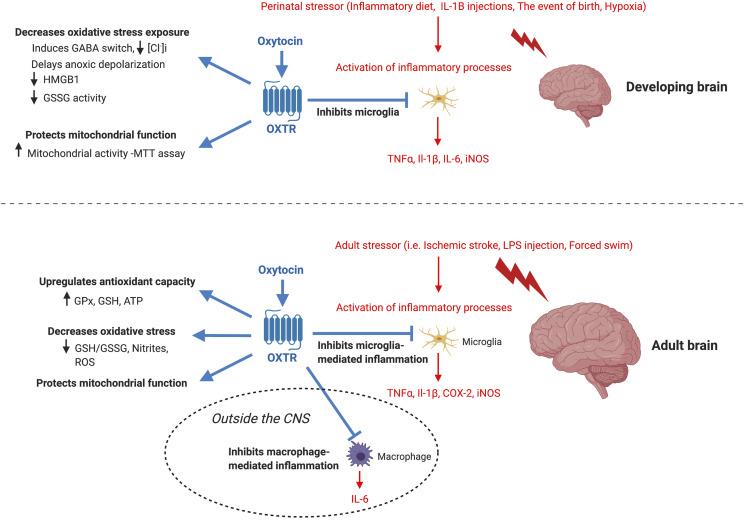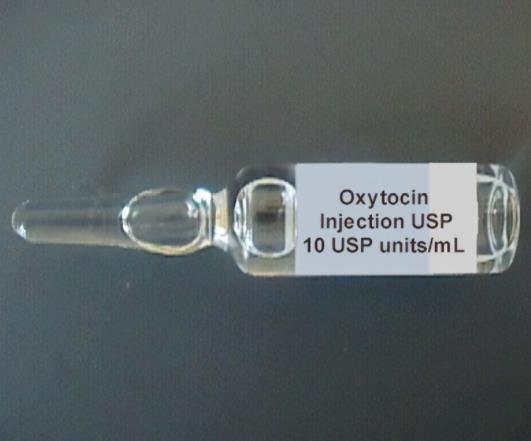Oxytocin
Discovery
The stimulatory activity on uterine contraction was reported in 1906. Oxytocin (OT) was isolated in 1949 and chemically synthesized in 1953. OT is the mammalian OT-family peptide, but it is also found in holocephalan cartilaginous fish.
Structure
The N-terminal six aa residues of OT are flanked by two cysteine residues forming an intramolecular ring while a C-terminal extension with leucine residue characterizes the neutral peptide property. The C-terminal is amidated. Mr 1007; pI 7.7. Freely soluble in water. One mg of OT is equivalent to approximately 500 IU.

Synthesis and release
Gene, mRNA, and precursor
The human OT gene, located on the short arm of chromosome 20 (20p12.2) in the vicinity of the AVP gene, consists of three exons and two introns.2 Human OT mRNA has 493 bp that encode a signal peptide, a mature OT with processing and amidation sites (Gly-Lys-Arg), and a neurophysin. The OT precursor lacks a glycoprotein (copeptin) moiety. In vesicles, the processed OT forms a complex with neurophysin in a 1:1 ratio. Cys1and Tyr2 of OT are the principal neurophysin binding residues. The binding is strong in an acidic environment within the neurosecretory vesicles while dissociation of the complex is facilitated in the neutral condition in plasma. The OT promoter in the 50 -flanking region contains a POU-homeodomain binding region and composite hormone response elements (cHRE). The cHREs are composed of multiple hormone responsive motifs, such as for interaction with estrogen receptors, thyroid hormone receptors, retinoic acid receptors, and an orphan receptor COUP-TF1. Interactions with multiple receptors result in the intricate positive and negative regulation of OT gene expression in different physiological conditions. Enhancers are found downstream of the OT gene.
Regulation of synthesis and release
The synthesis and release of OT change according to sexual maturation, the ovarian cycle, pregnancy, parturition, and lactation.6 Plasma concentrations vary during the ovarian cycle in the rat and human, with the highest levels corresponding to peak estrogen levels. In the rat SON, OT mRNA levels are high during estrous. OT is accumulated in magnocellular neurons during pregnancy, and is released at the time of parturition. The manipulation of estrogen and progesterone in ovariectomized virgin rats to mimic the changes during pregnancy enhances the OT mRNA levels in the SON and PVN. OT gene expression falls postpartum, and then increases during early lactation. The OT mRNA level during early lactation is maintained by the suckling stimulus. The suckling stimulus by infants immediately promotes the release of OT from the neurohypophysis. The expression of OT mRNA in magnocellular neurons is also increased by osmotic stimulus.
Pathophysiological implications
Clinical implications
Several neuropsychiatric disorders, including obessive-compulsive disorder, autism, anxiety, eating disorders, addiction, schizophrenia, and posttraumatic stress disorder (PTSD), show OT abnormalities. A positive correlation has been implicated between OT levels and happiness while a negative correlation with pain, stress, and depression has been observed. Lower concentrations of OT in the cerebrospinal fluid have been reported in otherwise healthy women with exposure to childhood abuse or neglect. Single nucleotide polymorphisms in the OT and OTR genes are thought possibly to be linked with autism spectrum disorders.
Use for diagnosis and treatment
Synthetic OT (pitocin) is used to induce labor and to help milk production. Atosiban, a peptidic antagonist, is approved in many countries under the name Tractocile for the treatment of preterm labor. OT treatment of adults with autism or Asperger’s disorder significantly reduces both the number and the severity of repetitive behaviors, and increases the ability to comprehend and remember the affective component of spoken words. Because OT is degraded in the gastrointestinal tract, it must be administered by injection or as a nasal spray. Lipidated OT is therapeutically beneficial as an OT analog because it has a longer half-life that restored behavioral impairment for an extended period (24 h).
);You may like
Related articles And Qustion
See also
Lastest Price from Oxytocin manufacturers

US $1.00/g2024-04-27
- CAS:
- 50-56-6
- Min. Order:
- 1g
- Purity:
- 99%
- Supply Ability:
- 100kg

US $1.00-9.90/g2024-04-27
- CAS:
- 50-56-6
- Min. Order:
- 1g
- Purity:
- 99%
- Supply Ability:
- 100kg




